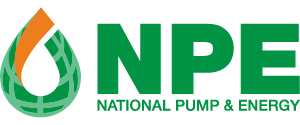You have a component in your facility with an IP rating of IP34. So what? You may be familiar with IP ratings from robot or electronic specification sheets. But do you really know whether your component is giving you optimal performance? If your sensor is operating in a relatively clean environment then probably it will. If, on the other hand, you want the same unit to last more than one shift in your dusty warehouse or light industrial facility, You need to invest in additional hardware, devices or parts. Don’t. Not until you are certain that the equipment you are purchasing satisfies the harsh conditions of your manufacturing facility – and carries the appropriate IP rating.
And while not even a high IP rating of IP67 will prevent your unit from being run over by a loaded forklift, it will guarantee that your equipment will withstand the dust and weather of your indoor – or outdoor -environment without compromising on performance.
So What is an IP Rating?
IP stands for Ingress Protection. The IP rating specifies the strength of the enclosure that houses your electronic equipment and is determined by a series of tests. Each IP rating comprises two or three distinct digits. To ensure that the equipment or part you are purchasing will operate effectively in your manufacturing environment Australian Standards AS1939 and EN60529 have detailed the three IP rating digits.
Understanding the IP rating system is easy. The first digit measures the degree of protection provided by the enclosure against ingress of solid objects and includes protection of persons against contact with, or approach to, live or moving parts (other than smooth, rotating shafts and similar mechanisms). The second IP rating digit measures the level of protection provided by the enclosure against ingress of liquids. The final digit measures the level of protection provided against mechanical impact damage. (The third digit is often left out leaving a two digit IP rating covering solid objects and liquids only.)
The table below gives you all the information you need to make your decision right first time when investing in hardware, devices or parts for your manufacturing plant.
| 1st Number | 2nd Number | 3rd Number (Not Always Shown or Specified) | |
|---|---|---|---|
| 0 | No protection | No protection | No protection |
| 1 | Protected against solid objects greater than 50mm. i.e. a large area of the body, such as the hand (note: no protection against deliberate access); solid objects exceeding 50mm in diameter. | Protected against dripping water – dripping water (vertically falling drops) shall have no harmful effect. | Protected against 0.225 joules impact – equivalent to impact of 150 gram mass dropped from 15cm above impacted surface. |
| 2 | Protected against solid objects greater than 12mm. i.e. fingers or similar objects not exceeding 80mm in length; solid objects exceeding 12mm in diameter. | Protected against dripping water when tilted up to 15 degrees – vertically dripping water shall have no harmful effect when the enclosure is tilted at an angle of up to 15 degrees from its normal position. | Protected against 0.375 joules impact – equivalent to impact of 250 gram mass dropped from 15cm above impacted surface. |
| 3 | Protected against solid objects greater than 2.5mm. i.e. tools or wires of diameter or thickness greater than 2.5mm; solid objects exceeding 2.5mm in diameter. | Protected against spraying water – water falling as a spray at any angle up to 60 degrees from the vertical shall have no harmful effect. | Protected against 0.5 joules impact – equivalent to impact of 250 gram mass dropped from 20cm above impacted surface. |
| 4 | Protected against solid objects greater than 1mm (0.10in) i.e. wires or similar solid material of thickness greater than 1mm in diameter; solid objects exceeding 1mm in diameter. | Protected against splashing water – water splashing against the enclosure from any direction shall have no harmful effect. | |
| 5 | Dust protected – dust does not enter in sufficient quantity to interfere with satisfactory operation of equipment. | Protected against water jets – water projected by a nozzle against enclosure from any direction shall have no harmful effects. | Protected against 2.0 joules impact – equivalent to impact of 500 gram mass dropped from 40cm above impacted surface. |
| 6 | Dust tight – no ingress of dust. | Protected against heavy seas – water from heavy seas or projected in powerful jets shall not enter the enclosure in harmful quantities. | |
| 7 | Protected against the effects of emersion – ingress of water in har mful quantity shall not be possible when the enclosure is immersed in water under defined conditions of pressure and time. | Protected against 6.0 joules impact – equivalent to impact of 1.5 kilogram mass dropped from 40cm above impacted surface. | |
| 8 | Protected against submersion |
